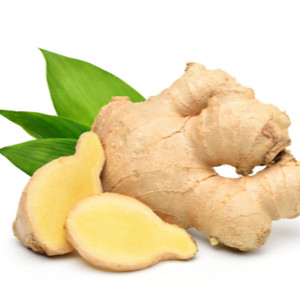
The Zingiberaceae botanical family, to which ginger belongs, includes three spices: Turmeric, Cardamom and Ginger. From ancient India and China to Greece and Rome, the rhizome (root) of ginger was revered as a culinary and medicinal spice. Everyone is familiar with gingerbread, ginger beer and preserved ginger. But ginger is more than a spice - its medicinal properties have been highly valued over the centuries.
What is ginger actually?
The ginger plant is a creeping perennial with thick, tuberous underground stems that can grow up to a metre tall. Jamaican ginger (which is lighter in colour than the Asian roots) is grown mainly in tropical countries and is considered the best variety for culinary purposes. In the Chinese tradition, it is mainly dried ginger that is used.
Origins
Native to Southeast Asia, India and China, ginger has been an integral part of the diet for thousands of years and is valued for its aromatic, culinary and medicinal properties. The Romans first imported ginger from China. By the mid-16th century, Europe was importing more than 2,000 tonnes per year from eastern India. Today, the most important commercial producers of ginger include Jamaica, India, Fiji, Indonesia and Australia.
Ginger is available in various forms:
* Ginger beer
* Whole fresh roots
* Dried roots
* Ginger powder: This is ground from the dried root
* Preserved ginger: Fresh young roots are peeled, sliced and cooked in sugar syrup.
* Crystallised ginger: This is also boiled in sugar syrup, air-dried and rolled in sugar.
* Pickled ginger: The root is cut into thin slices and pickled in vinegar. This pickle, known as "gari" in Japan, often accompanies sushi to refresh the palate between courses.
The great effects of ginger tea
Ginger tea works small wonders for a cold. It is a diaphoretic tea, which means it warms you from the inside and promotes sweating. Even if you don't have a cold and just want to warm up a bit on cold winter days, ginger tea is the best choice! Even in cases of nausea, the benefits of the root come into their own. Ginger root has even been reported to reduce the symptoms of ship sickness including dizziness, nausea, vomiting and cold sweats. Ginger has also been used to treat nausea and vomiting associated with mild symptoms of pregnancy sickness . If you want to make a ginger tea (for nausea), add 20-40 grams of fresh, chopped ginger to a cup of hot water. If you like, add a slice of lemon or a few drops of honey.
Ginger soothes the digestive system
Historically, ginger has a long tradition of alleviating discomfort in the gastrointestinal tract. Ginger is considered an excellent carminative, a substance that promotes the elimination of excess gas from the digestive system and soothes the intestinal tract. Colic and dyspepsia respond particularly well to ginger.
The origin of ginger ale
In English pubs and taverns in the 19th century, bartenders placed small containers of ginger for patrons to sprinkle into their beer. And the ancient Greeks valued ginger so much that they mixed it into their bread, thus inventing the first gingerbread.
Research
The many healing properties of ginger have been extensively researched. When applied to the skin, ginger can stimulate circulation and soothe burns. As a hot drink, it promotes perspiration. This makes ginger good for feverish illnesses such as flu or colds. The root, the part of the plant most commonly used in alternative forms of medicine, is rich in essential oils. It is precisely these oils that contain the active ingredient gingerol.
Gingerol
Ginger contains very effective anti-inflammatory compounds called gingerols. These substances are believed to have a pain-relieving effect on osteoarthritis or rheumatoid arthritis when consumed regularly, thus restoring mobility. Gingerols inhibit the formation of inflammatory cytokines, which are chemical messengers of the immune system.
Fresh ginger can be bought in most supermarkets. Ripe ginger has a tough skin that must be peeled off before use. Fresh ginger can be stored unpeeled in the refrigerator for up to three weeks. Whenever possible, choose fresh ginger that has been over-dried as it has a more intense flavour and is higher in gingerol. The root should look fresh, firm, smooth and free from mould, with no signs of rot or wrinkled skin. If you choose dried ginger, store it in a tightly sealed container in a cool, dark and dry place for no longer than six months.
Single Wormwood Drop
Ginger is a great alternative to medicines for a wide range of aches and pains, whether in concentrated capsule form, eaten fresh or drunk as a tea or ginger ale. But ginger contains moderate amounts of oxalate. People with a history of oxalate-containing kidney stones should avoid excessive consumption of ginger. If you are unsure about consuming ginger, always consult your doctor first.
